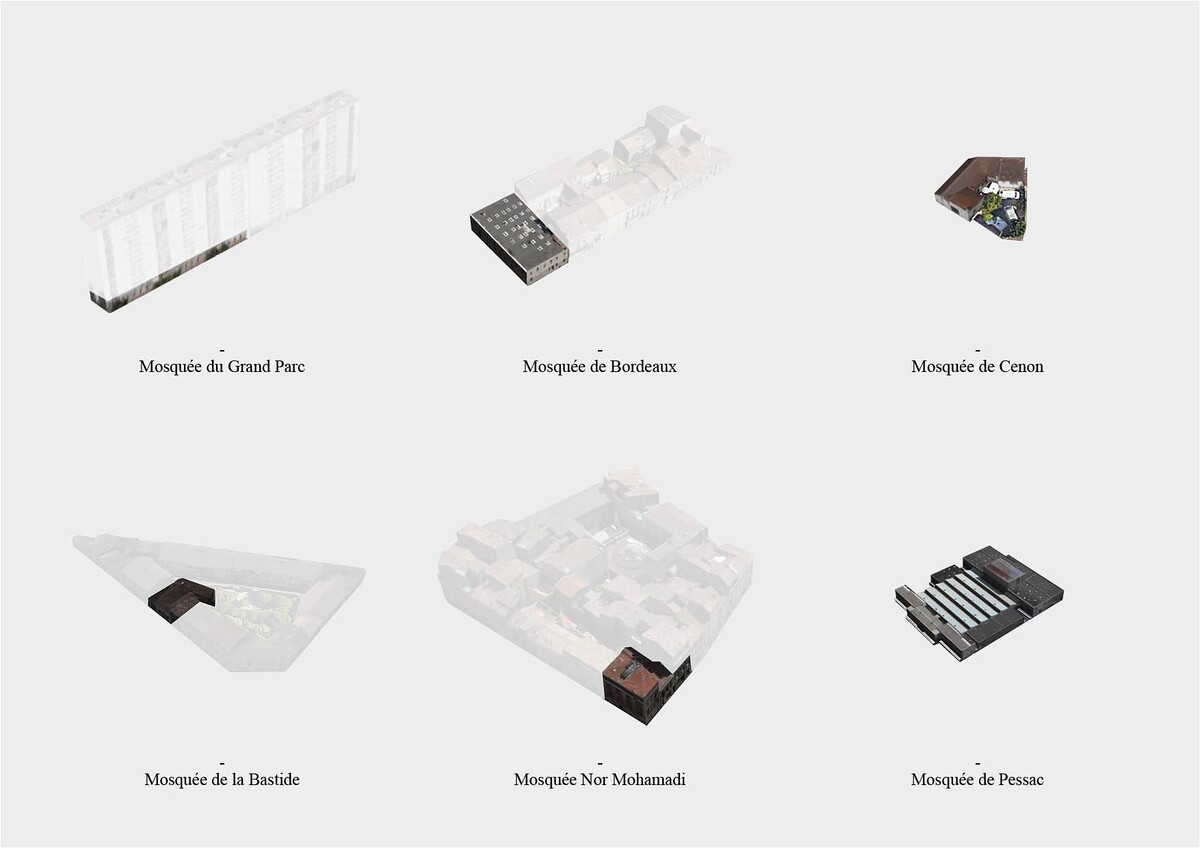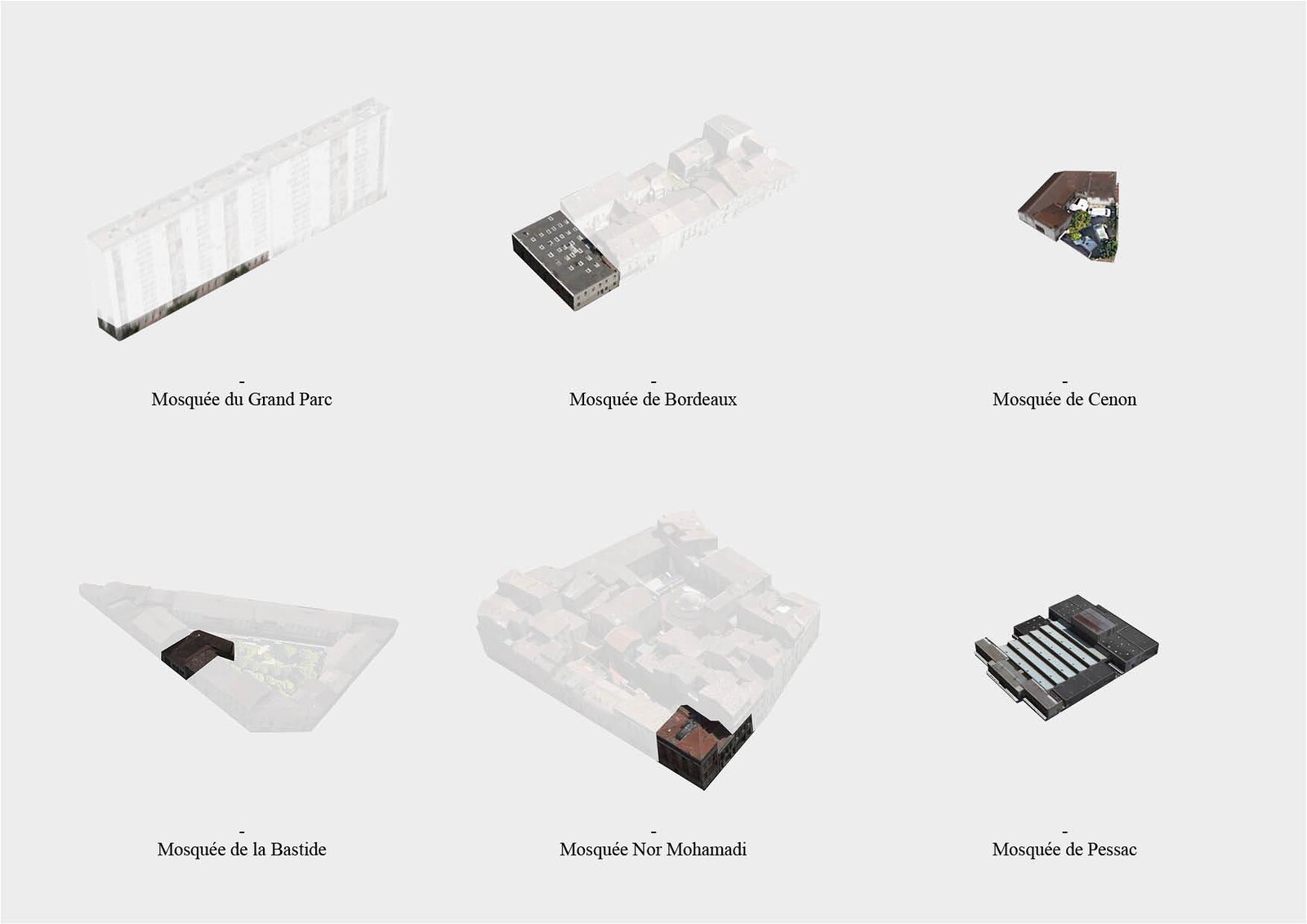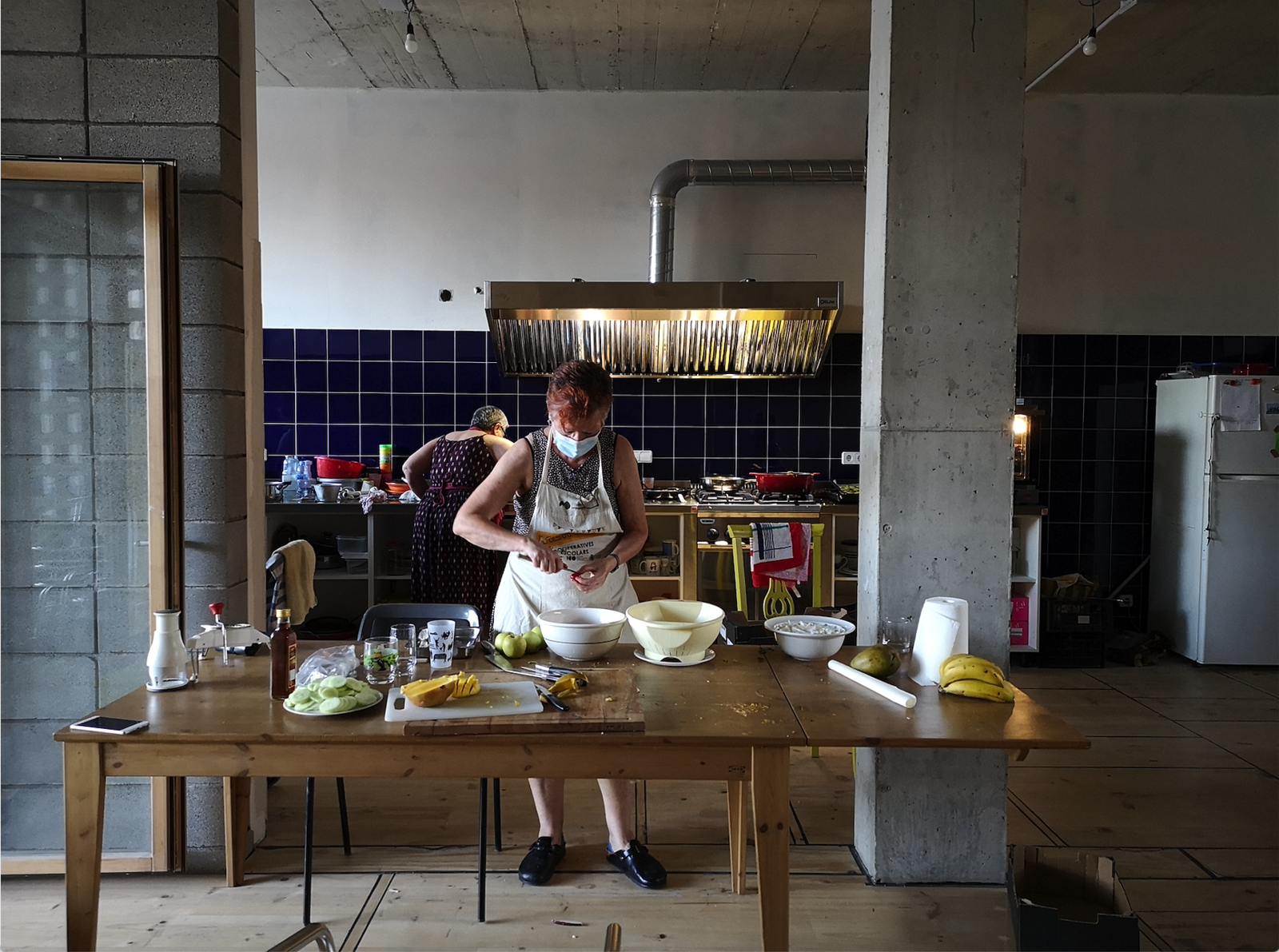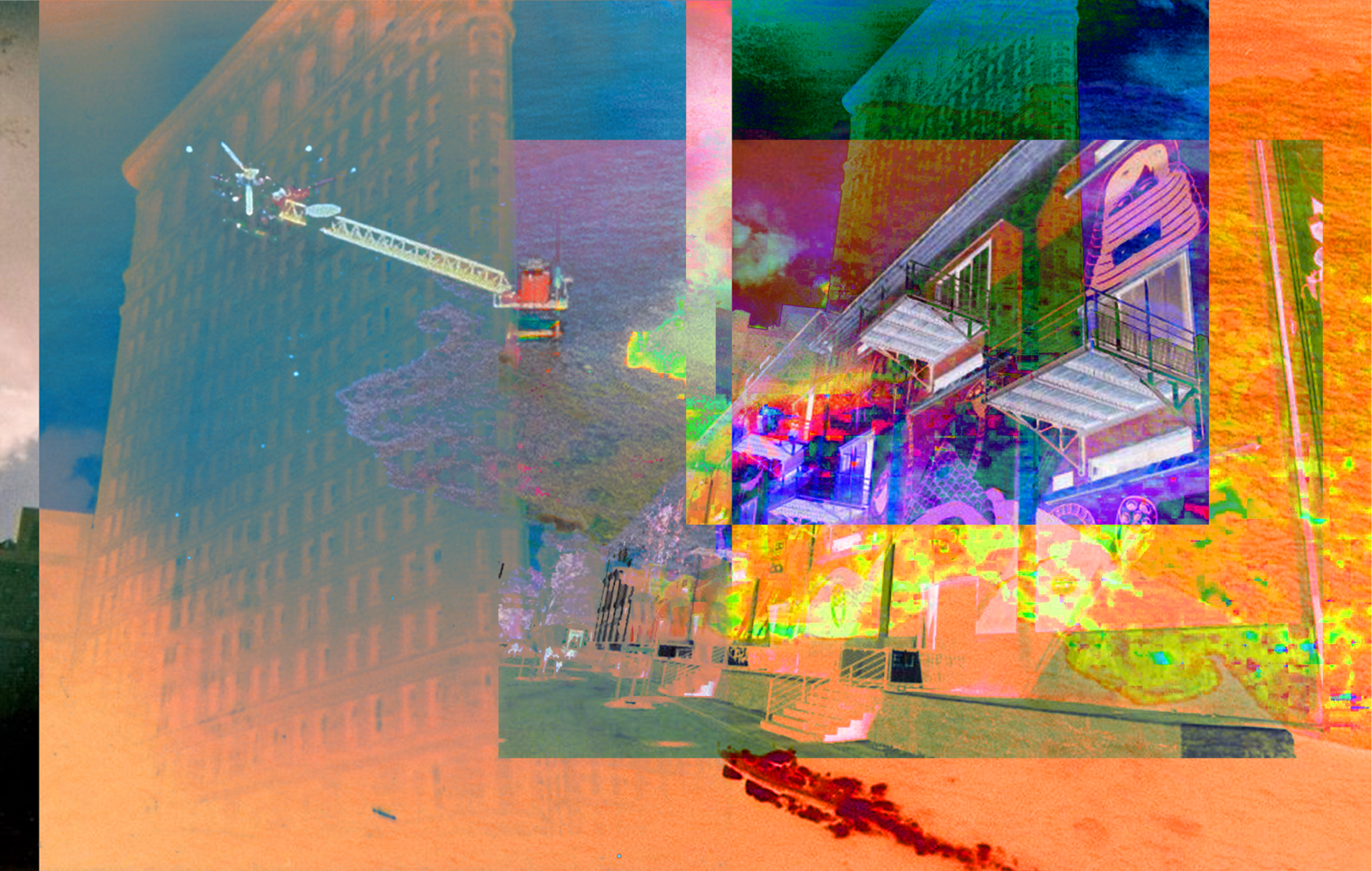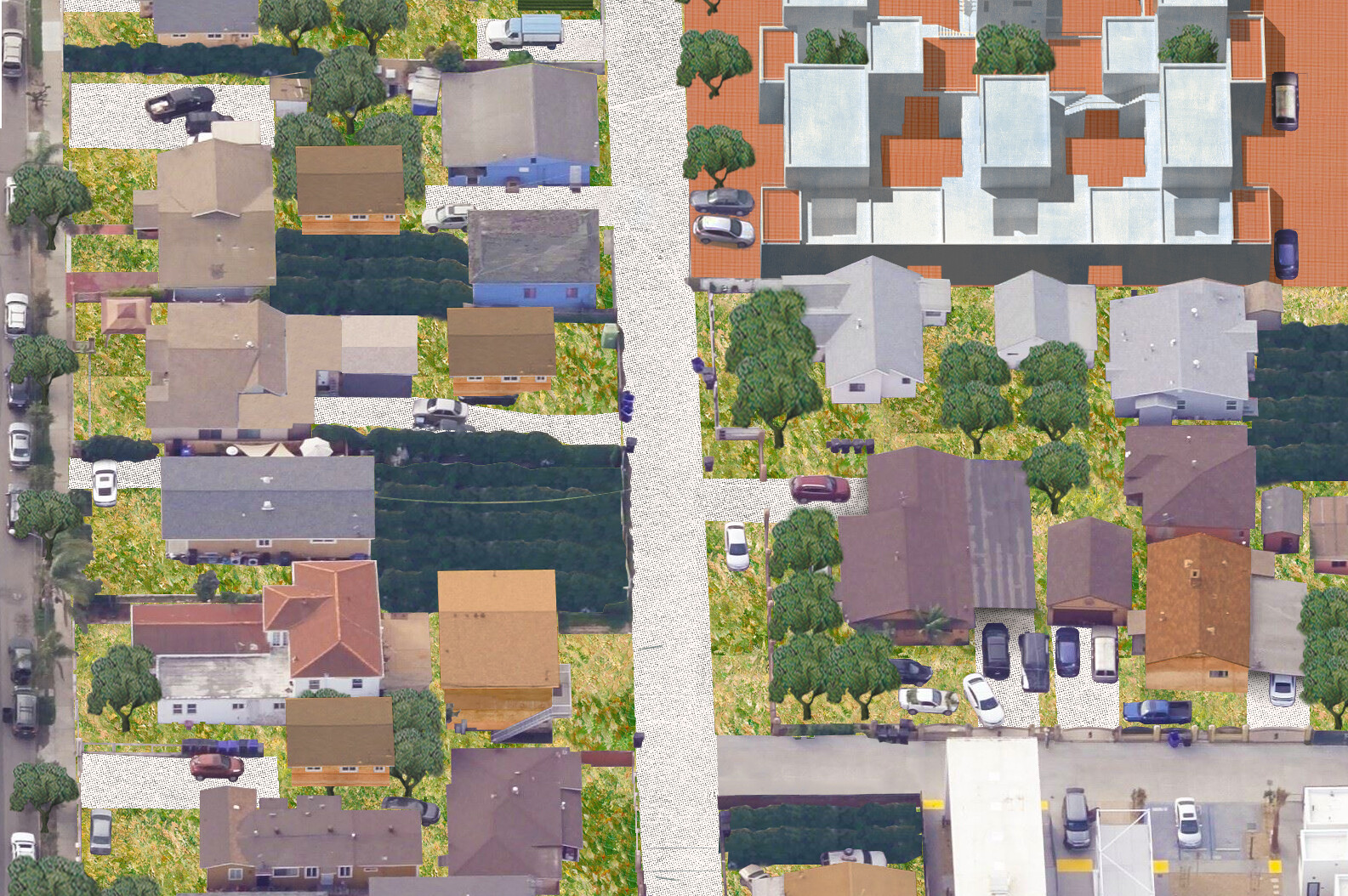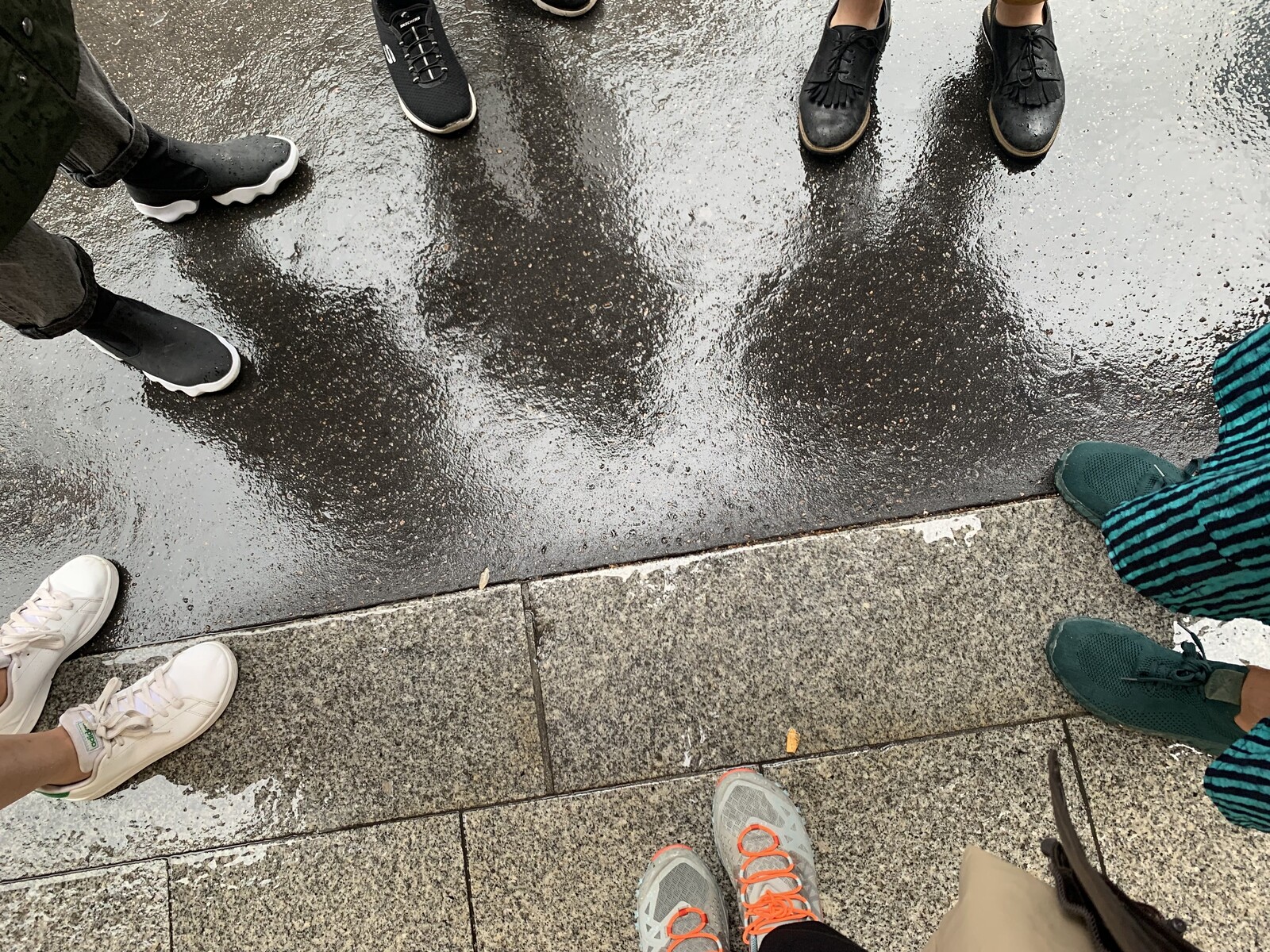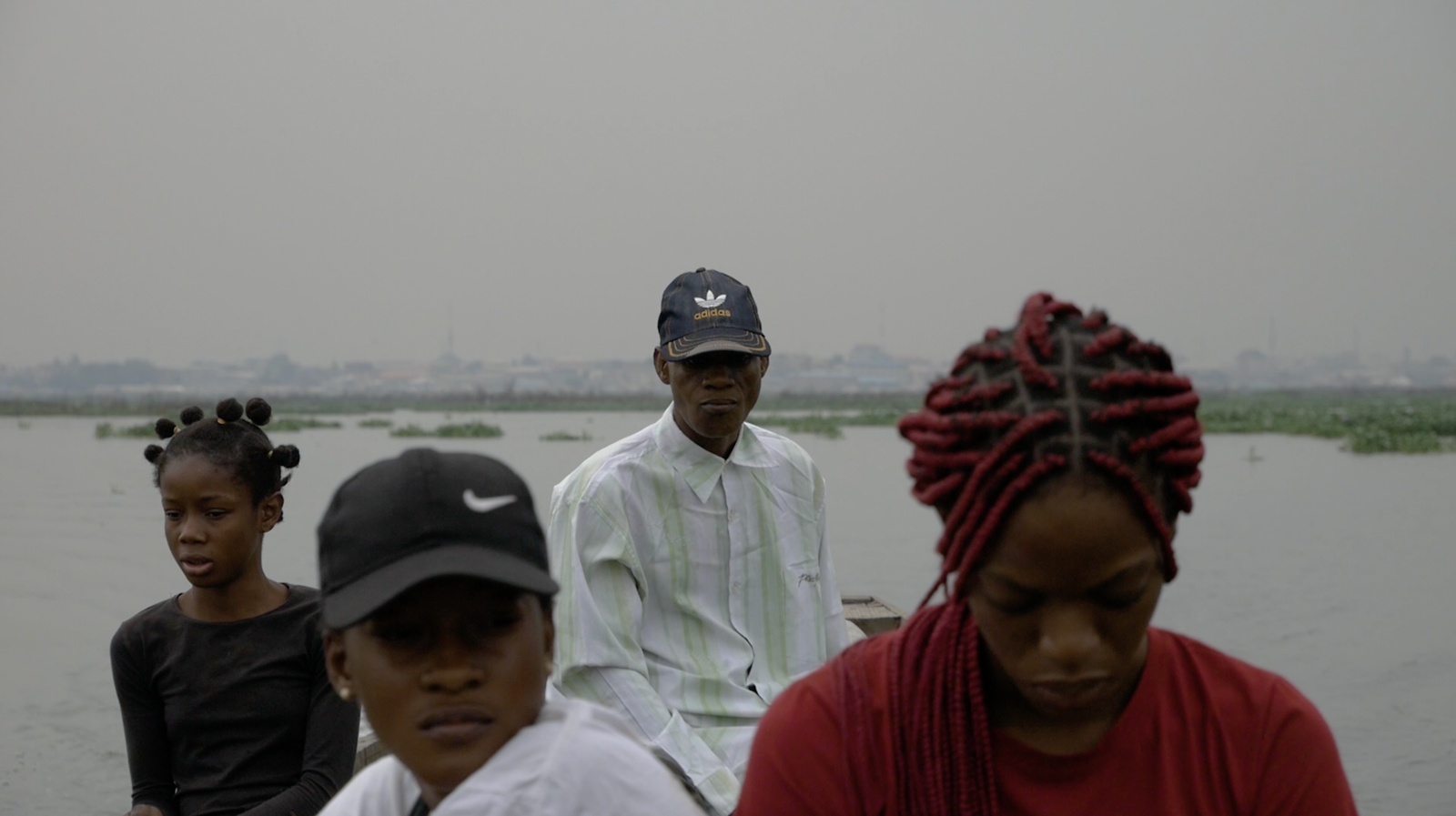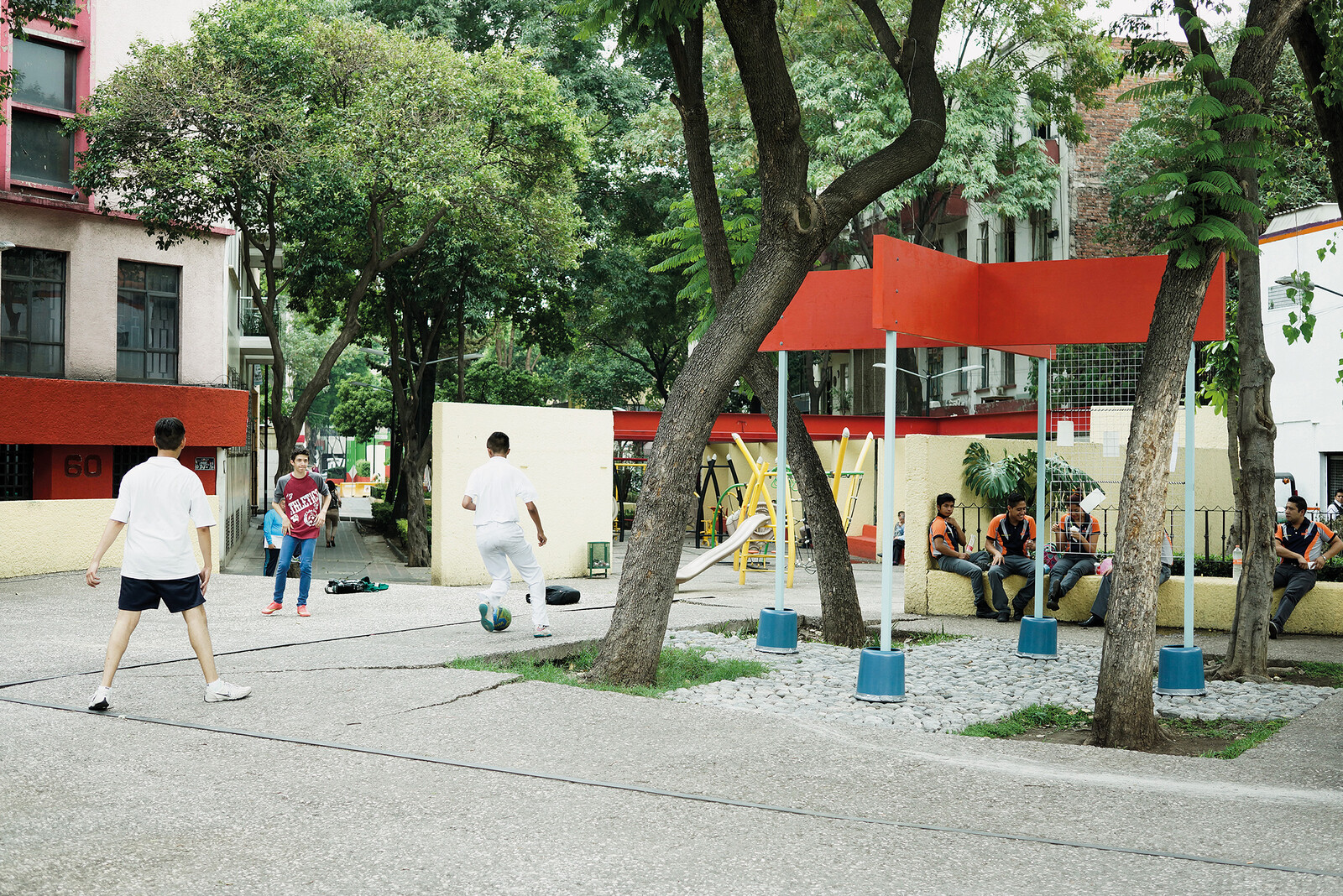Islam has been an integral part of France since the eighth century. Throughout its history and colonial project, Islam has served as a counterpoint, allowing French identity to consolidate in relation to this identifiably different “other.” The estimated five million Muslim people living in France today obviously need and deserve places to worship. Yet the political climate surrounding the creation of mosques, including state-level restrictions on public funding of all places of worship, make the process drawn out and fraught with challenges. Beyond implementation, however, mosque architecture in France remains largely influenced by the places of origin of its immigrant Muslim populations, which consolidates the image of Islam as foreign to France, rather than a legitimate part of the national religious landscape. Public architecture of French mosques fails to reflect the diversity—and thus meet the needs—of the French Muslim community.
French mosques that can be easily and publicly recognized as such tend to transpose codes of Islamic architecture found in North Africa, with the Grand Mosque of Paris and the Grand Mosque of Strasbourg being the most prominent examples. Yet architectural elements deemed “characteristic” of mosque architecture tend to be endlessly debated and questioned on their capacity to fit within local urban fabrics. Furthermore, the visibility of Islam and Muslims in France is constructed, at state level, as a “problem” of security and a failure of integration policy. With the goal of reducing the visibility of Islamic prayer, then, officials prefer the establishment of discreet prayer rooms to the construction of mosques. But these spaces are usually insufficient, with their limited capacity sometimes prompting the use of the street as an alternative space for prayer. This provides critics with further evidence of Islam’s “visibility problem,” only further hindering the development of solutions that can serve the needs not only of the Muslim community, but also French cities as a whole.
Context: Mosques in France
The Umayyad invasion of Gaul (719–759 AD), and eight hundred years later the Franco-Ottoman alliance in the siege of Nice (1543), testify to France’s involvement in the history of the Mediterranean, and thus the spread of Islam itself. The French colonial project continued this close, if often uneasy, relationship between France and Islam. While in mainland France, laicité (secularity) was solidified through the 1905 Law on the Separation of Church and State, it did not apply to Algeria, where an “official” form of Islam loyal to the colonial state was cultivated.1 Following World War II, France encouraged and facilitated the migration of people from its colonies to rebuild the country. And in an attempt to create favorable conditions for the maintenance of this labor force, the state implemented generalized policies for family reunification. This period not only saw the increased presence of Muslim populations, but also placed the problematic relationship between the colonial state and Islam on France’s doorstep. It was within this context that the first prayer rooms were established in factories and on sites where migrant workers were accommodated.
The 1905 Law on the Separation of Church and State also provides for the freedom of exercise of religion and the right to establish places of worship. In practice, however, the 1905 Law is generally evoked as a constraint on religious visibility, most often targeting Islam as the second largest and most “visibly different” religion in France. Beyond its predominantly Arab and black population, Islam in France is further marked as “other” through the physical appearance of Muslims—men with beards wearing jillaba, veiled women—and its concentration in relatively restricted areas, due to its communities’ migration history and socio-economic make up. Mosques provide one recurrent object of contention in current political controversies around the visibility of Islam within French physical space and debates around communitarianism, supposed radicalization, and breaches of the republican value of laicité.
Public debate in France often conflates controversies surrounding the visibility of Islam—from the burqa and halal butchers to instances of violence carried out in the name of Islam. This leads to a situation where visible—or audible—manifestations of Islamic faith—or activities and aesthetics associated more broadly with “Arab” culture—have come to be seen as indicators of a generalized security threat. As in the colonial period, debates around “visible manifestations” of Islam tend to mask stark socio-economic inequalities that divide migrant populations from the “French” majority. Yet these factors that are easily rejected as subsidiary to supposed threats to French national identity and public safety.
Given the complex position of Islam in France, any proposal for a new mosque must first overcome a political environment that is naturally anathema to its coming into being. Any new mosque must also attempt, once completed, to act as a communication aid and a positive representation of Islam by and for French Muslims, both in relation to the communities within they find themselves situated within as well as on a broader national level. Beyond simply building a building, prospective mosque architects have the responsibility of finding pragmatic ways to address the tension between problems of mosque capacity shortage, a mosque’s impact on the local area, and the political tendency to attempt to render Islam publicly invisible.
The general scarcity of space for Islamic prayer in France results in mosques and prayer rooms that regularly fail fire safety inspections, and thus attract increased attention as the object of “random” inspections. Crowds often block roads and pavements around the mosque, which as a disruption to the normal functioning of the city, necessitate the presence of police. In this sense, the problem of scarcity and limited capacity of mosques becomes shared, while only further dividing the population of French cities into distinct Muslim and non-Muslim districts. More broadly, however, the means through which Islamic faith is expressed is an opportunity to directly impact the relationship between France and its Muslim populations, and contribute to the elaboration of a French (or European) identity and associated set of values that leaves space for the expression of Islamic faith.


The Grand Mosque of Paris under construction, 1925. Source: BnF Gallica.
The Grand Mosque of Paris: A Historical Precedent
In an early survey of the political and social processes surrounding the position of Islam in French society, Gilles Kepel traces a progressive political transformation of “Islam in France” into “the Islam of France” and its insertion into political debates around identity and assimilation. Kepel takes the inauguration of the Grand Mosque of Paris in 1926 as the starting point for his investigation.2 The Grand Mosque of Paris is the largest mosque in France, and occupies a large site in the fifth arrondissement, an affluent neighborhood next to the Jardin des Plantes. The result of thirty years and several attempts to establish an Islamic place of worship in the capital, it was designed by Maurice Tranchant de Lunel, Architect of Historic Monuments in Morocco during French Occupation, in a Hispano-Moorish style, and features a thirty-three-meter-high minaret.
Before that, however, during the nineteenth century, several mosque projects were considered for Paris, including a mosque for the Beaujon district in northwest Paris in 1842, a mosque on the Quai d’Orsay in 1847, and a proposal to attach a mosque to the Moroccan embassy in 1878 and 1885.3 It was only after the World War I, however, that French authorities decided to build the Mosque of Paris, as a way of paying tribute to the 100,000 Muslims who had fought and died for France. Its design was inspired by the el-Qaraouiyyîn mosque in Fez—one of the most important mosques in Morocco and one of the oldest in the world—and built in a combination of Almohad Moroccan and Iberian al-Andalus styles. The mosque was built in reinforced concrete and its decorations, in particular the mosaic tilework zelliges, were fabricated by Moroccan craftsmen from Fez and Meknes using traditional materials. According to Gerbert Rambaud, the minaret is inspired by the Zitouna mosque, in Tunisia, itself built in the Almohad style.4
The mosque was inaugurated on July 16, 1926 in the presence of President Gaston Doumergue and Moulay Youssef, the Sultan of Morocco. Built on a plot of 7,500 square meters, it can accommodate 1,000 people and offers a prayer room, a madrassa (Quranic school), a library, a conference room, extensive gardens, a restaurant, tea room, hammam, and shops. The mosque today is better known for its fresh mint tea drunk in lush arabesque gardens than as a place of worship. The choices made in its design, specifically the extraction of North-African architectural features directly from the French Colonies, solidify the idea of the mosque as alien to French National identity.
Bordeaux, a Contemporary Case Study on Invisibility
The city of Bordeaux, in the southeast of France, is one of the richest and most populated in the country. While home to more than 50,000 faithful (20,000 within the city alone), there are only six mosques in the Bordeaux conurbation, which can accommodate less than 6,000 people in total. By comparison, a city like Marseille has sixty-four mosques, and still lacks the capacity to fully accommodate its estimated 200,000 Muslims.
Beyond the lack in capacity, however, existing mosques in Bordeaux are virtually invisible. Most are inserted in otherwise mundane buildings with little visible feature that would indicate their function or signal their quality as a sacred space. In the inner city, for instance, the only public indication of the Nor Mohamadi Mosque is a temporary plastic banner, a symbol of its precarious existence. In the Eastern suburbs, the 300-square-meter “Great Mosque” of Cenon occupies a plain three-story building that is flanked by modern residential buildings thrice its size. And in the North, the Mosque of the Great Parc occupies the better half of a small residential tower’s ground floor, a space typically destined for small restaurants, barbershops, and commercial lease.
This general invisibility is perhaps a result of the French principle of laicité, according to which the state cannot provide funding for the construction of any new religious buildings. New mosques must therefore be financed privately, which often means being financed by collecting donations of the faithful—a time-consuming and precarious process. Mosques also tend to be created by local Muslim communities themselves, which means that most clients are inexperienced, non-professional, and lack a number of valuable project management skills when attempting to realize a meaningful architectural project.
Even when their walls cannot accommodate them, Muslims are expected to practice their faith within the privacy of these buildings. In early 2023, The Great Parc Mosque requested the installation of rain tarps on its parking lot, to protect the faithful from likely rain during Ramadan evening prayers. The request was denied. Yet the mosque is dramatically undersized: 1,500 people typically attend its Friday prayer in a space that has a total capacity of 300. And for Ramadan, most of the faithful are expected to pray on the parking lot. Bordeaux’s deputy mayor Laurent Guillemin stated, however, that “[the mosque] responded to their crowding problem with an outdoor extension, which is not the right answer.”5 But the correct answer was not provided, and remains a mystery.
When mosques do manage to create extensions, they may do so while staying invisible. The Great Mosque of Cenon, which boasts a similar community size to that of the Great Parc (over 1,000 people on Fridays), started work on doubling its size in 2019, aiming for a total of 600 square meters.6 Extending towards the back of its plot to add classrooms, a library, and conference room, this additional space will remain completely hidden from the street. In the absence of subsidies of any kind, the fundraising effort is still ongoing: so far €186,000 has been crowdsourced from the community itself, out of a budget of one million euros. Having gathered only twenty percent of what they need in over two years, the expansion is expected to carry on slowly for an extended period of time.
In an unprecedented effort, the municipal council voted in March 2005 to create a Grand Mosque in the city, according to which the Muslim Federation of Gironde (the region, or department of Bordeaux) would establish a building capable of hosting five thousand people, almost doubling the existing capacity of the entire Bordeaux area. In twelve thousand square meters, the prospective Grand Mosque would include a place of prayer as well as classrooms, a library, a restaurant, and exhibition halls, with the mosque itself only occupying twenty percent of the total site area. Portuguese architecture firm Aires Mateus won the competition that was held for the project together with French architect Martin Duplantier and landscape architect Anouk Debarre. The project offers an interesting take on Mosque architecture in its attempt to break away from pastiche and move toward a more abstract and local interpretation of a place of worship. Spirituality is the driver behind the architectural gesture of opening a space between a lower undulating ground and a floating cloud above. The budget for construction is estimated at twenty-four million euros.
In September 2014, the local government announced that the future Grand Mosque of Bordeaux would not be located as planned in the residential Benauge district. The change followed objections from local residents to potential traffic disturbances and a lack of parking space. In negotiation with the Muslim community’s representatives, a new location was found in the industrial area Quai de la Souys as part of the Euratlantique urban regeneration project.7 However, this change of location still did not help the project move forward, as revealed in an investigation by Mediapart in 2015: it was still too much of a “sensitive issue for elected officials.”8 And in 2016, the mayor at the time, Alain Juppé, declared: “This mosque does not exist and will not exist.”
Conclusion
The construction of new mosques in France is fraught with difficulties, reflecting contemporary manifestations of a historically tense relationship between France and the Islamic religion. Each decision taken in the design of a new mosque is political insofar as the result will have an impact beyond the walls of the mosque itself, in relation to national discourse around Islam, local policies, the mosque’s neighbors, and building regulations. As an architectural project that is inevitably sensitive and strategic, a mosque cannot be reduced to a purely functional architecture.
Though the hidden mosques of Bordeaux might be interpreted as purely functional spaces, they are not fully functional as spaces of prayer. Unable to meet the growing demand for their use, mosques struggle to host their community in decent conditions while facing a constant pressure to remain invisible. Without subsidies, without capital, and facing a near-ban on new construction and ambitious projects, the French Muslim community must fight to preserve its spaces from atrophy.
In this sense, merely existing as a mosque, or a Muslim community in Europe or any other non-majority Muslim context, can never be enough. Rapidly increasing Muslim populations combined with an increasingly hostile political environment and complicated histories of post-colonial identity means that merely existing is a losing game. Each hidden mosque can only hope to survive, but will most likely find itself overcome by economic or political forces before long. In the formulation of the architect Michael Badu, a mosque must not only find ways to survive as functional space for prayer and other activities, but also to represent Islam to Muslims and non-Muslims alike in dialogue with the city within which it is situated. It must reassure and, at the same time, resist.
Naomi Davidson, Only Muslim (Ithaca: Cornell University Press, 2012). Marcel Maussen, “The Governance of Islam in France: Church-State Traditions and Colonial Legacies.” In: Religious Newcomers and the Nation State: Political Culture and Organized Religion in France and the Netherlands, eds. Erik Sengers and Thijl Sunier (Delft: Eburon Academic Publishers, 2010), 131–154.
Kepel, Gilles, Les banlieues de l’islam; Naissance d’une religion en France (The suburbs of Islam; Birth of a Religion in France) (Editions du Seuil, 1987).
Historian Michel Renard examined the motivations for the pursuit of such a project, noting that in addition to philanthropic and political motivations—and against the backdrop of the colonial pacification of Algeria—there were “also religious ones because Muslims are considered closer to Roman Christianity than are the Jews.” Renard, Michel « Les prémisses d’une présence musulmane et sa perception en France — Séjours musulmans et rencontres avec l’islam » (Arkoun 2006, 2e partie, chap. II),, p. 573–582.
Gerbert Rambaud, La France et l’islam au fil de l’histoire: Quinze siècles de relations tumultueuses (Monaco: Le Rocher, 2017), 321.
Elsa Provenzano, “Bordeaux : Une mosquée veut un abri extérieur pour faire face à l’afflux de fidèles, la ville refuse,” 20 Minutes, 30 January, 2023.
“Pleine à craquer aux heures de prière, la mosquée de Cenon s’agrandit,” Fanny Ohier, France Bleue, 14 May, 2019.
Former Mayor Alain Juppé declared to the Sud-Ouest newspaper: “we made the decision to move the mosque project to the Garonne Eiffel, to a site where there are no residents and where parking spaces will be available. So there won’t be any problem.” See ➝.
“The construction of a twelve thousand metre square mosque remains an extremely sensitive issue for elected officials. (…) If, from the outset, he was in favor of the Grand mosque project in Bordeaux, carried by a Tareq Oubrou to whom he is close and whom he considers to represent a moderate Islam, Juppé no longer wishes to speak on the subject”. See ➝.
In Common is a collaboration between e-flux Architecture, the Chicago Architecture Biennial, UIC College of Architecture, Design, and the Arts, and arc en rêve within the context of its exhibition “common, community driven architecture.”
